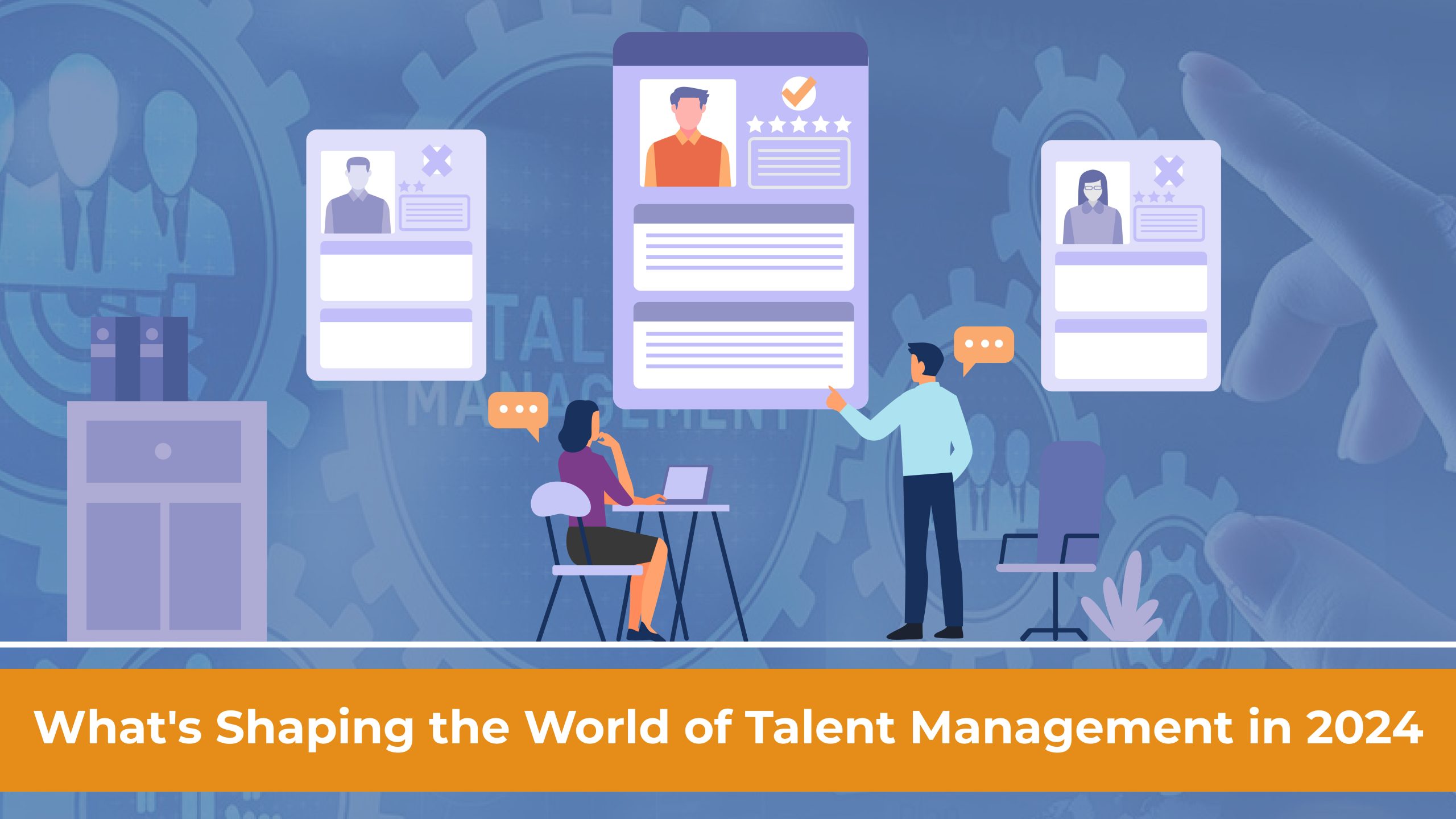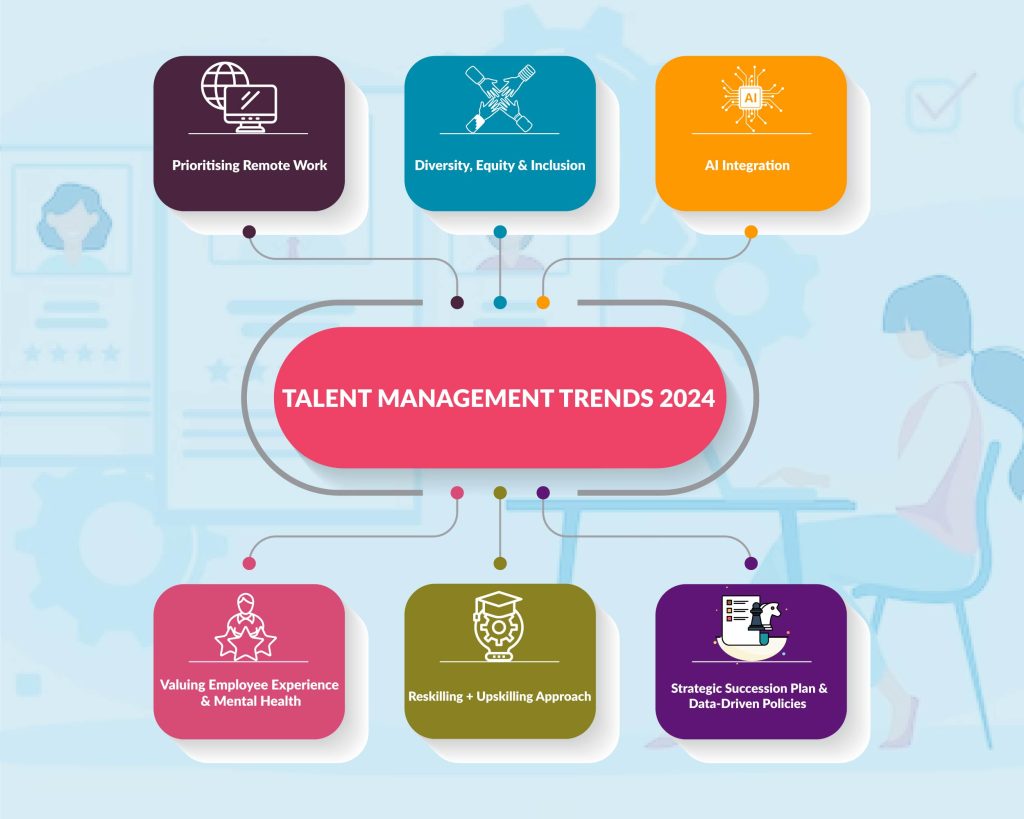
Talent Management
Workplaces are hubs of talent. Talents don’t need to be more creative in this area. Hence, talent reflects on the capacity of employees at the workplace to act as an asset to the organization. Organizations hire best suits, basically, those who align well with the demanded job profile and expected skill sets and those who settle well with the culture and beliefs of the organization. Hiring the best suit, or precise talent management or talent acquisition, is the need of the hour. Organizations have shifted their orientation towards ‘talent-inclination’ rather than the ‘workforce-inclination ‘. ‘This blog will offer an intermediate guide to talent management and how it affects the industry trend charts.
What is talent management?
Initially, the term talent management was coined by McKinsey & Company. J. Moczy dłowska defined talent management as activities taken vis-à-vis personnel with outstanding talents to ensure their development and increase operational efficiency while simultaneously achieving corporate goals. Talent management is also known as Human Resource Management or Talent Acquisition. Talent management involves systematically attracting, identifying, developing, engaging, retaining, deploying, and strategically sticking to our business objectives. The 3Cs of talent management revolve around competency, commitment, and contribution. Competency consists of allotting the best employees with desirable skill sets into apt roles and hiring competent talents who align well with the culture and skillset of the profile steps in the commitment. Employees would feel dedicated enough to work towards the progression of the organization. Lastly, on an aggregate scale, employees contribute towards profitable results.

Gradually speaking, talent management follows the pattern of hiring potential employees who could uplift any organization’s productivity level. Every organization sticks to this basic pattern and tries to modify its approaches depending on cultural factors and conductivity formats. It is a strategic management of employees (talent) to utilize their fullest potential profitably. Human resource professionals and management teams are any organization’s custodian stakeholders of talent management. In the name of talent management, professionals must identify vacant positions, work on sourcing and onboarding eligible candidates, engage them within the system, and upskill needed skills, offering them training programs to flourish the existing work profile and retaining them while keeping the future progress perspective in mind.
What is the difference between talent acquisition and talent management?
Talent management is a fluent process of retaining employees in the organization. Talent management consists of training high-potential employees, offering them suitable training and development programs, and paving reliable reward and compensation plans to promote growth in the organization. Human resource and management departments/ professionals are custodians of handling the chaos accounted under talent management. On the other hand, talent acquisition consists of acquiring and attracting suitably skilled candidates according to the required skill set of the organization. Talent acquisition involves:
- Establishing a stronger brand image for the organization.
- Attracting qualified employees.
- Handling relationships with past employees for future purposes.
- Integrating diversity, inclusion, and equity in hiring practices.
Both talent management and talent acquisition are interrelated. It begins with hiring skilled talents for the organization (talent acquisition), and ahead of it, talent management involves retaining and managing hired employees.
Talent Management Trends 2024
Industries and working sectors are witnessing an active shift in formal and conventional work approaches in workplace cultures. Earlier conventional approaches focused on workplace-oriented designation with limited employer-oriented norms and standards to be met. Yet, with time, the patterns have taken an improvised shift to facilitate better workers, employees, employers, and, most majorly, the organizations themselves. Talent management and human resources are correlated facets. One tends to rely on another through functions and role profiles. One by one, we will focus on expected trends shaping the talent management and human resources construct for businesses and organizations in 2024.
- Remote work or hybrid work mode has gained vast popularity in the workplace culture during the COVID-19 pandemic. Priorly, organizations had a slightly reluctant approach over opting for remote work mode as it restricts employees from the essence of workplace setup. Now, organizations have far more lenient terms for employees opting for remote work mode. Expansion of this approach has eased employees’ work-life balance, enabling them to engage effectively. From a talent management perspective, professionals can incorporate an employee-friendly work environment.
- As the year passes, trends actively rely on flourishing the DEI aspects of organizations. Diversity, equity, and inclusion promote workplace culture and practices free from biases and offer equal and exclusion-free environments for employees and workers to strive for. Another aspect of DEI is to promote holistic positivity in the workplace.
- Organizations are actively pursuing a reskilling + upskilling approach and aligning it effectively with their training promotional programs. Earlier upskilling persisted within the workplace cultures that endorsed the growth of employees within their designated areas. Suppose team leaders enroll their marketing employees in developmental training programs so that the employees can stay up to date with marketing trends. Today, leaders encourage employees to opt for areas other than designated ones. Suppose the same marketing employees are encouraged to opt for training in fiscal management. The organization’s vision is to outsource the best, highest-quality work to their employees. In the same way, organizations encourage employees to opt for educational courses that would boost the prevailing career profile of the employees. Continued education programs have gained legitimate credibility among organizations, and team leaders have quite a positive inclination to endorse them.
- Integration of AI is one of the major revolutions in the working sector. The alignment is impeccable. Businesses fear that AI might consume the value of the workplace and workforce, making businesses solely dependent on technology. It’s purely a myth. The inauguration of AI will create more job opportunities for businesses and offer great assistance in work functions. AI works on prompts. Hence, it will function as a significant tool yet requires man-work to formulate it.
- Employee experience is another aspect that has been gaining priority in the trends list for years. Employees, being the primary resource for organizations, deserve value from organizations. Valuing employee experience reflects on taking employee feedback in the name of improvisations, which should be taken effectively and make amends for the betterment of the workplace. Also, mental health sensitivity has paved its way within the majority of workplace cultures. Organizations valuing the mental health of employees, considering issues like work-life balance, psychological problems, etc, are seen as the greenest flags.
- Another quantitative trend inclusion is reliance on strategic succession plans and data-driven decision-making policies. A strategic succession plan refers to having a deciphered strategy at the organizational level that focuses on categorizing through job function so that anybody’s exit or absence wouldn’t affect the flow of work by prioritizing internal talent within the organization and preparing them for the strategic situation. This approach minimizes disruption and transcends traditional models of talent acquisition.
- A research study has surfaced on the trends demanded in the USA that would give professionals an efficient idea of how to shape their talent management and human resources practices. This large-scale study encompasses employees’ and organizations’ attitudes toward the prevailing culture, practices, and norms. Around 50% of the target population emphasizes improving workforce planning and accepting better strategies for the betterment of businesses. Around 40% of the target population has quoted on work towards improving mental/physical health and including more benefits in prevailing plans. Nearly 35% have emphasized investing more in retirement savings and financial well-being benefits. 44% have shown concern for modernizing pay practices.
Concluding what has been quoted above, talent management is an integral part of human resources. Professionals handling human resource areas in businesses often find themselves tackling talent management and talent acquisition effectively. This blog offers a distinguished and descriptive take on talent management and what trends could help professionals in flourishing practices within their organizations.




